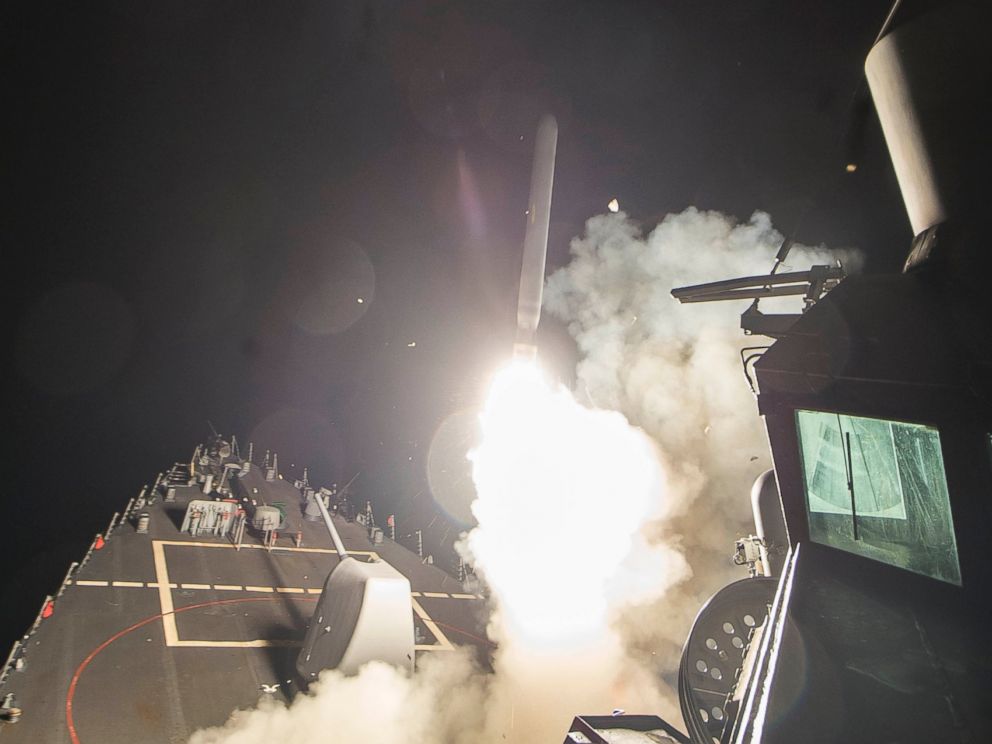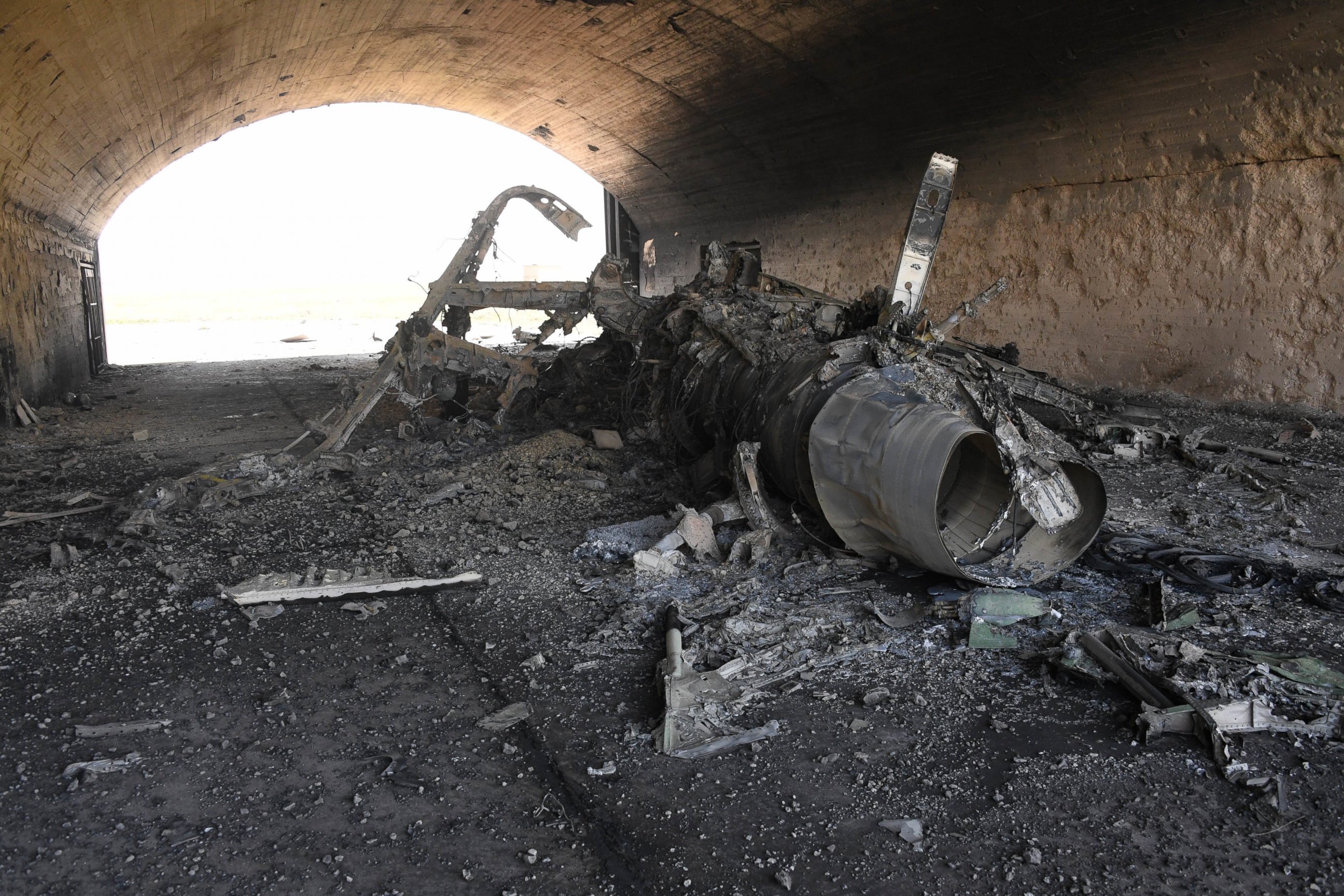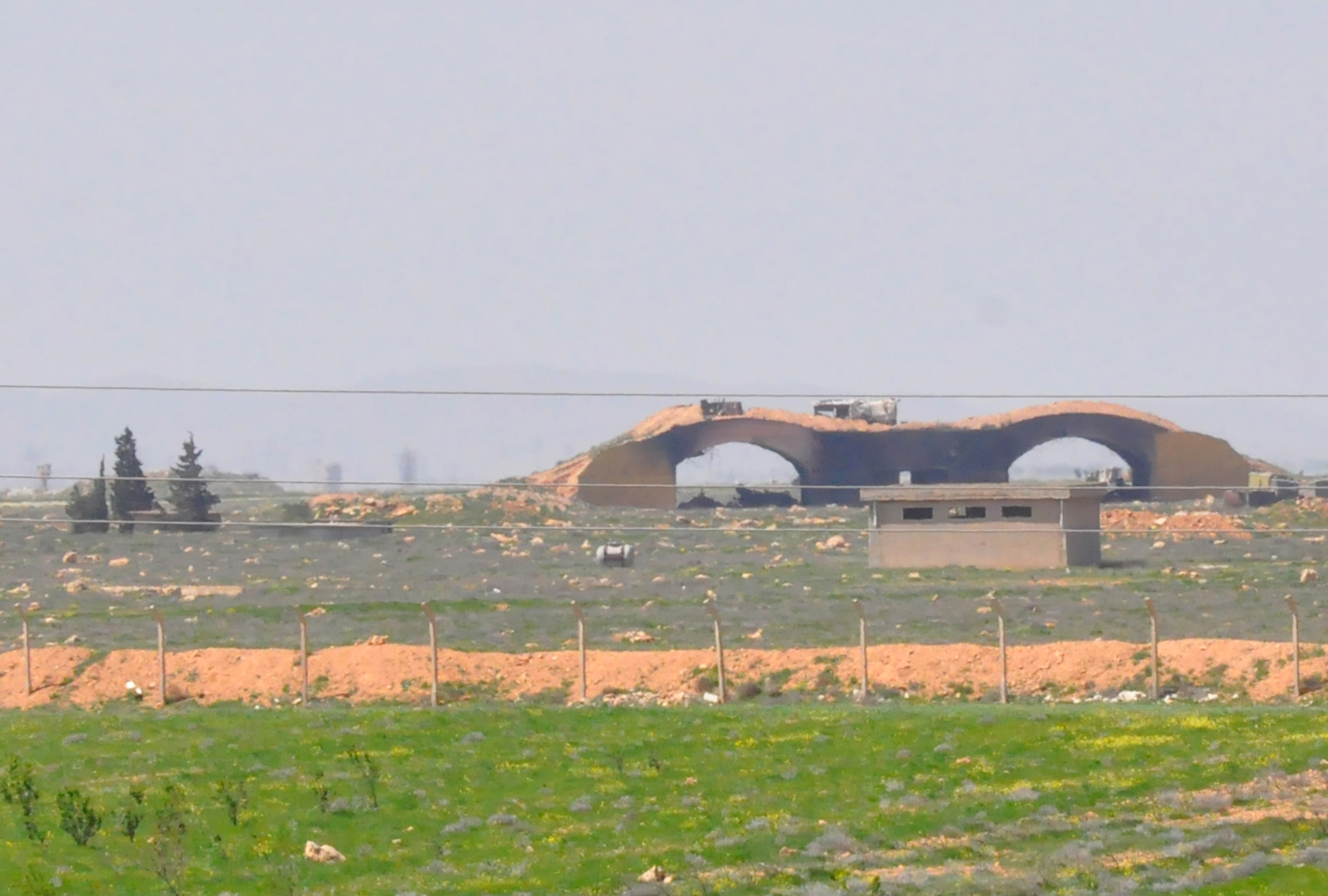Military options the US could use against Syria if there's another chemical attack
In April, the U.S. responded to a chemical weapons attack by firing 59 missiles.
— -- The White House is warning the Syrian regime against conducting another chemical weapons attack, saying in a statement that Syrian President Bashar al-Assad and the Syrian military "will pay a heavy price."
The statement was released Monday night after the White House said the U.S. had found "potential" evidence that Assad was preparing an attack similar to the one carried out on April 4 that killed dozens of civilians, including children.
"If ... Mr. Assad conducts another mass murder attack using chemical weapons, he and his military will pay a heavy price,” the statement warned.
The April chemical attack took place at the Shayrat airbase.
In a response to that attack, the U.S. launched 59 Tomahawk missiles at the Syrian base from two U.S. Navy ships in the Mediterranean Sea.

"The activity we have seen at Shayrat in the last couple of days is associated with chemical weapons handling at a known spot on that base, a known aircraft shelter that’s used for chemical weapons," Pentagon spokesman Capt. Jeff Davis told reporters on Tuesday. "And that is what inspired the statement you saw last night."
According to Davis, the intelligence suggesting that Syria was preparing for another attack emerged over the last few days with the information becoming "more compelling yesterday."
Davis would not say if the Pentagon has presented President Trump with a series of options to respond to an attack by the Assad regime.
Separately, a U.S. official told ABC News that military planning has been underway for several days in case options are required.
ABC News breaks down some of the military options the U.S. could take if the Assad regime launches another chemical weapons attack.
Tomahawk missiles from the Mediterranean
The U.S. could choose to repeat its April response by launching a barrage of Tomahawk missiles from U.S. Navy ships in the Mediterranean Sea.
The USS Ross and USS Porter, which launched the 59 missiles in April that took out roughly 20 Syrian planes, are no longer in the region.
However, the George H.W. Bush carrier strike group is southwest of Cyprus. That group contains guided missile cruisers, the USS Philippine Sea (CG 58) and USS Hue City (CG 66), as well as guided-missile destroyers USS Truxtun (DDG 103) and USS Cole (DDG-67).


Tomahawk missiles were the chosen weapon of choice in April for several reasons. They are intermediate-range, jet engine-powered missiles that can be launched from a ship or submarine. They fly at low levels, up to 1,500 miles at 550 mph, and can carry a 1,000-pound conventional warhead.
Perhaps most importantly, their use ensures that U.S. military personnel aren’t put in harm’s way. The long and lean missile, standing 18-20 feet, simply finds its target using GPS coordinates.
But it doesn’t necessarily fly in a straight line. Rather, the U.S. Navy describes the path as “an evasive route” designed by “several mission-tailored guidance systems.”
For all its benefits, the Tomahawk doesn’t come cheap; every missile costs nearly $1 million.
Additionally, Russia's air defense systems in Syria are capable of shooting down incoming Tomahawk missiles.
Russia has conducted recent cruise missile strikes in Syria launched from Russian Navy ships offshore. The Russians have used those missile launches to strike at what they say are terrorist targets. But a U.S. official says the Russians have also used the launches to calibrate the targeting radars that could be used to bring down tomahawk missiles.
Manned or unmanned aircraft
Another option is for manned or unmanned U.S. aircraft to target the Shayat airbase again or hit other Syrian military installations. These aircraft could launch from neighboring ships or U.S. bases in the region.
But this option carries significant risk, in part because U.S. planes could be brought down by Russia's sophisticated long-range air defense systems.
Furthermore, as a result of the U.S. downing a Syrian war plane earlier this month, Russia has said it will target any U.S. aircraft flying west of the Euphrates River.